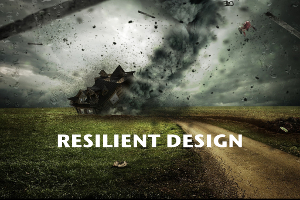Sustainable Trends for Building Product Manufacturers to Consider in 2017
- < Don't Let Your Building Products Become Obsolete
- > A Building Product Manufacturer's Guide to Fighting the Resistance
“It’s hard to imagine a time more hopeful and horrifying for sustainable business. On the one hand are great achievements and milestones. The Paris Agreement on climate change was ratified last year, faster than any United Nations pact in history, a powerful confirmation of the importance the nations of the world attach to combating climate change. Companies continued to ratchet up their commitments and achievements on renewable energy, greenhouse gas emissions, sustainable supply chains, water and land stewardship, the circular economy and other aspects of a sustainable enterprise. Technology continued its inexorable march, accelerating sustainability solutions in energy, buildings, transportation, food and just about everywhere else. And yet. The indicators continue to be troubling.” -Joel Makower, CEO of GreenBiz Group, in the 10th Annual State of Green Business 2017.
GreenBiz’s new report for 2017 is an excellent resource that identifies several trends, important metrics, and industry challenges. Corporate innovation and new technologies are increasing efficiency. Green power is expanding and prices are steadily dropping. Net-positive buildings are multiplying around the globe. We will review a few of the trends and discuss how they may affect building product manufacturers.
Healthy Building Materials
According to Makower, “The past few years have seen a rapid growth of materials innovations, from plant-based plastics to green chemistry breakthroughs to materials recovered from waste, including plastics bobbing in the ocean. Together, these innovations represent a dramatic rethinking of how things are made, and a shifting of supply chains toward innovators both large and small.” How do health building materials fit into the construction industry?
LEED v4 promotes healthier building materials by offering multiple LEED credits with optimization points. The Materials & Resources Building product disclosure and optimization - material ingredients credit encourages the use of products and materials for which life-cycle information is available and that have environmentally, economically, and socially preferable life-cycle impacts. Most building product manufacturers contribute points for this LEED credit by using a Health Product Declaration. Option 2 of the LEED credit offers an additional point for Material Ingredient Optimization.
Another LEED v4 credit is the Building Product Disclosure and Optimization: Environmental Product Declaration credit. This credit encourages the use of products and materials for which life-cycle information is available and that have environmentally, economically, and socially preferable life-cycle impacts. This credit is to reward project teams for selecting products from manufacturers who have verified improved environmental life-cycle impacts. Option 2 of this credit offers project teams an additional point for Multi-Attribute Optimization.
Building product manufacturer Interface has pledged to “transform dispersed materials into products and goodness”. The manufacturer has set up a program to collect discarded fishing nets in coastal villages to create materials for its supply chain. The program has been a success and collected nearly one hundred tons of discarded fishing nets to turn back into nylon fiber for carpet products.

Water Wars
Water conflict is a term describing a conflict between countries, states, or groups over access to water resources. The United Nations recognizes that water disputes result from opposing interests of water users, public or private. Water crises are affecting the planet and pose a risk to the global economy. Growing cities are demanding more water, climate change is affecting access to water supplies, and water quality is declining in many parts of the world due to pollution.
There have been epic water wars and conflicts throughout U.S. history. California has experienced a series of water conflicts dating back to the early 20th century. The city of Los Angeles diverted water from the Owens Valley in the 1920’s via an aqueduct. Construction on the aqueduct started in 1913 and required more than 2,000 workers and the digging of 164 tunnels. Growing crops in the valley became so difficult that farmers tried to destroy the aqueduct. In 1924, farmers and ranchers dynamited part of the system letting water return to the Owens River.
As nations run short of water, economic growth will decline and food prices will rise, raising the risk of violent conflict and waves of large migrations. Drought, poor management of pumping, inefficient pipes in metropolitan municipal water systems, aging infrastructure, exploding population growth, and the demand for more food production has increased demand on pumping more groundwater.
Developers, city planners, and designers need to work together to address these water issues. The GreenBiz report suggests “instead of treating water as an inexpensive commodity that is used once and disposed of, water is managed as an infinitely recyclable and reusable asset, a valuable resource on the balance sheet, just like fixed capital assets at a manufacturing plant that require periodic investment to maintain and keep clean.”
Resilient Design
According to the, Resilient Design Institute, “resilient design is the intentional design of buildings, landscapes, communities, and regions in response to these vulnerabilities.” Resilient design is increasingly becoming part of the sustainability conversation. In 2016, the U.S. Defense Department issued the Climate Change Adaptation and Resilience Directive. The directive aims to facilitate federal, state, local, tribal and private and nonprofit sector efforts “to improve climate preparedness and resilience.”
The devastation caused by Hurricane Katrina in New Orleans in 2005 as well as the Sendai Earthquake and tsunami in 2011 in Japan have played significant roles in educating companies about the risks of a changing climate, for both themselves and their suppliers. Perkins + Will and partners has launched the RELi Resiliency Action List + Credit Catalog. RELi is a project rating system similar to LEED, but with a focus on resilient design. The system includes credits that encompass long term adaptability, resiliency management systems, enhanced emergency planning, plan for rainwater harvesting and food production, edible landscaping, and alternative sewage management.
The USGBC launched three LEED pilot credits related to resilient design in 2015. The LEED credits fall into the Integrative Process category of LEED. In LEED v4, they are applicable to all Building Design and Construction (BD+C) rating systems, along with Homes and Mid-Rise Residential rating systems. The LEED credits tackle many challenges such as emergency preparedness planning for flooding, hurricanes, and tsunamis. In addition, the credits address passive survivability and functionality during emergencies, access to potable water, and back-up power. Buildings, companies, and communities will need to survive the many challenges that will be affecting us in the future. Resilient design is a key component in this debate.
What sustainability related trends does your company see on the horizon and how will they affect your business?
For more information or to discuss the topic of this blog, please contact Brad Blank





